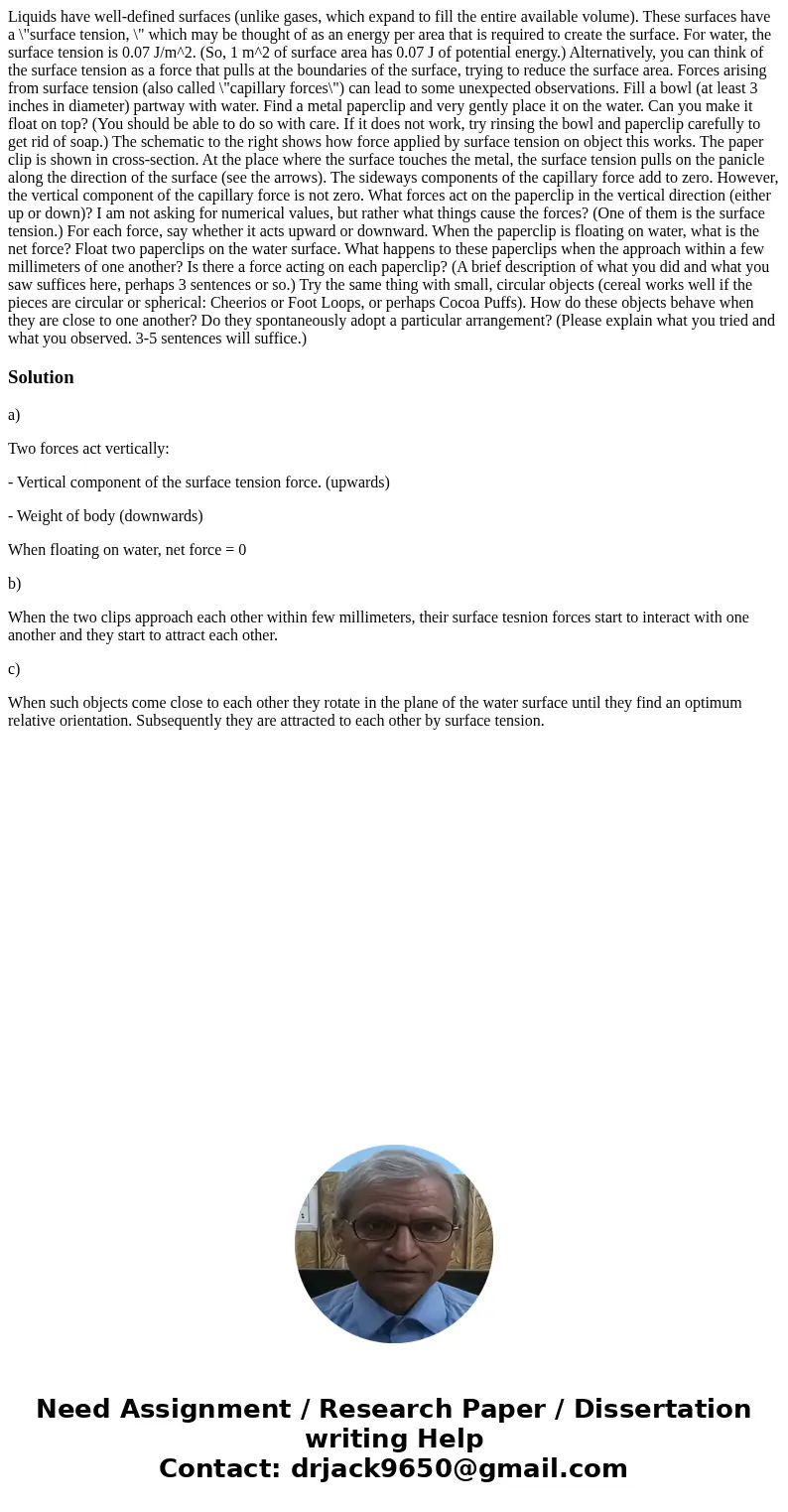Liquids have welldefined surfaces unlike gases which expand
Liquids have well-defined surfaces (unlike gases, which expand to fill the entire available volume). These surfaces have a \"surface tension, \" which may be thought of as an energy per area that is required to create the surface. For water, the surface tension is 0.07 J/m^2. (So, 1 m^2 of surface area has 0.07 J of potential energy.) Alternatively, you can think of the surface tension as a force that pulls at the boundaries of the surface, trying to reduce the surface area. Forces arising from surface tension (also called \"capillary forces\") can lead to some unexpected observations. Fill a bowl (at least 3 inches in diameter) partway with water. Find a metal paperclip and very gently place it on the water. Can you make it float on top? (You should be able to do so with care. If it does not work, try rinsing the bowl and paperclip carefully to get rid of soap.) The schematic to the right shows how force applied by surface tension on object this works. The paper clip is shown in cross-section. At the place where the surface touches the metal, the surface tension pulls on the panicle along the direction of the surface (see the arrows). The sideways components of the capillary force add to zero. However, the vertical component of the capillary force is not zero. What forces act on the paperclip in the vertical direction (either up or down)? I am not asking for numerical values, but rather what things cause the forces? (One of them is the surface tension.) For each force, say whether it acts upward or downward. When the paperclip is floating on water, what is the net force? Float two paperclips on the water surface. What happens to these paperclips when the approach within a few millimeters of one another? Is there a force acting on each paperclip? (A brief description of what you did and what you saw suffices here, perhaps 3 sentences or so.) Try the same thing with small, circular objects (cereal works well if the pieces are circular or spherical: Cheerios or Foot Loops, or perhaps Cocoa Puffs). How do these objects behave when they are close to one another? Do they spontaneously adopt a particular arrangement? (Please explain what you tried and what you observed. 3-5 sentences will suffice.) 
Solution
a)
Two forces act vertically:
- Vertical component of the surface tension force. (upwards)
- Weight of body (downwards)
When floating on water, net force = 0
b)
When the two clips approach each other within few millimeters, their surface tesnion forces start to interact with one another and they start to attract each other.
c)
When such objects come close to each other they rotate in the plane of the water surface until they find an optimum relative orientation. Subsequently they are attracted to each other by surface tension.

 Homework Sourse
Homework Sourse